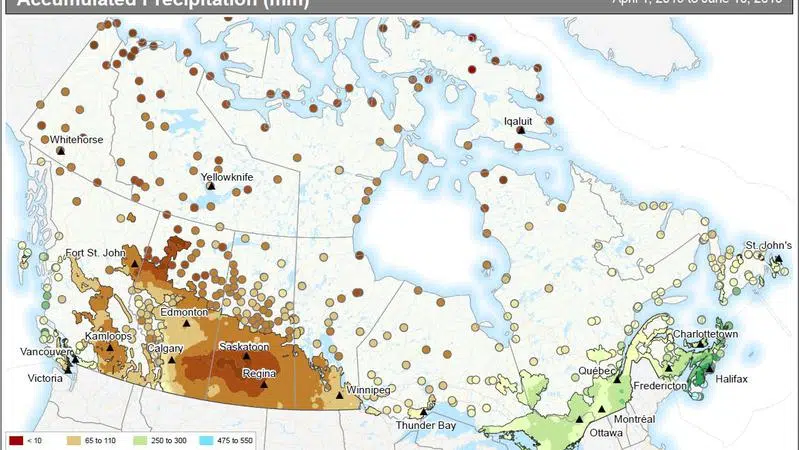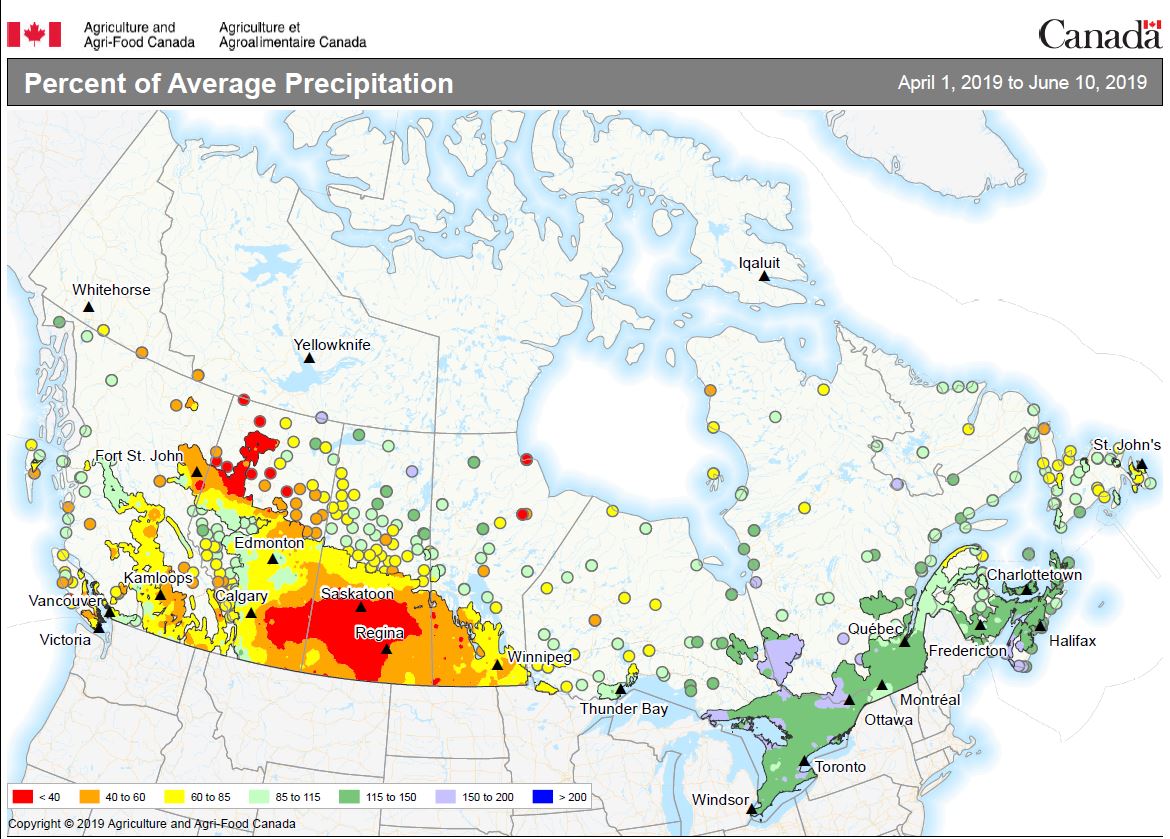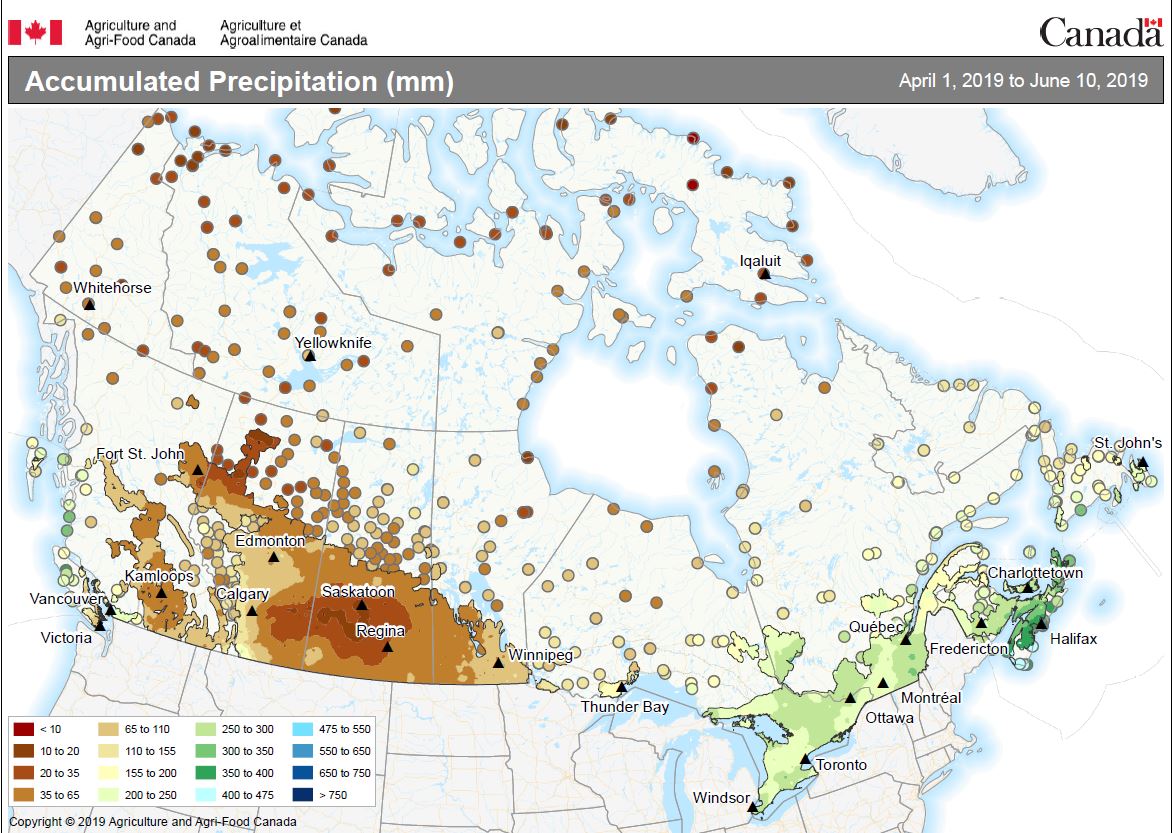
Dealing with drought, before it hits
CALGARY — With many parts of western Canada drier than normal, farmers and ranchers are either thinking about or already dealing with drought conditions.
 Average precipitation – Agriculture Canada
Average precipitation – Agriculture CanadaJanice Bruynooghe, a beef industry consultant and cattle producer near Outlook, SK, offers a perspective about the importance for cattle producers to make drought management strategies a permanent part of every grazing plan.



